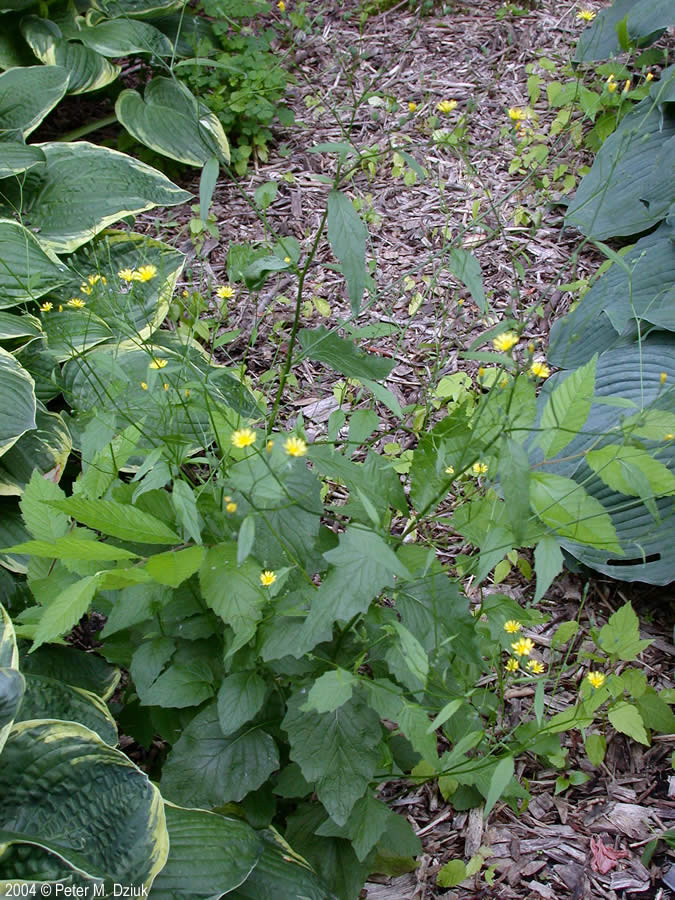|
|
|
Nipplewort
Nipplewort typically grows up to 1 meter tall and has alternate leaves that are lance-shaped and covered in fine hairs. Its bright yellow flowers, which appear from May to October, are arranged in clusters at the ends of its branches. The plant produces numerous small seeds that are dispersed by wind, water, or animals. Nipplewort is considered invasive because it can quickly colonize disturbed habitats such as roadsides, fields, and gardens, and outcompete native plant species. Its rapid growth and ability to reproduce both sexually and asexually through root fragments make it difficult to control. Efforts to manage nipplewort typically involve a combination of physical removal and chemical control methods such as herbicide application. Preventing the spread of the plant by cleaning tools and equipment that have come into contact with it is also important in minimizing its impact. Is Nipplewort edible? Nipplewort (Lapsana communis) is considered to be edible and has a long history of use as a food and medicinal plant in various cultures. The young leaves, flowers, and stems of the plant can all be consumed, and they have a mild and slightly bitter flavor. The leaves can be used in salads or cooked as a vegetable, while the flowers can be used as a garnish or added to soups and stews. Some people also use nipplewort in herbal teas or as a natural remedy for various ailments. However, as with any wild plant, it's important to properly identify nipplewort before consuming it, as there are similar-looking plants that can be toxic. Additionally, it's important to be cautious when consuming any new food, especially if you have any allergies or health conditions that may be affected by it. References:
|





